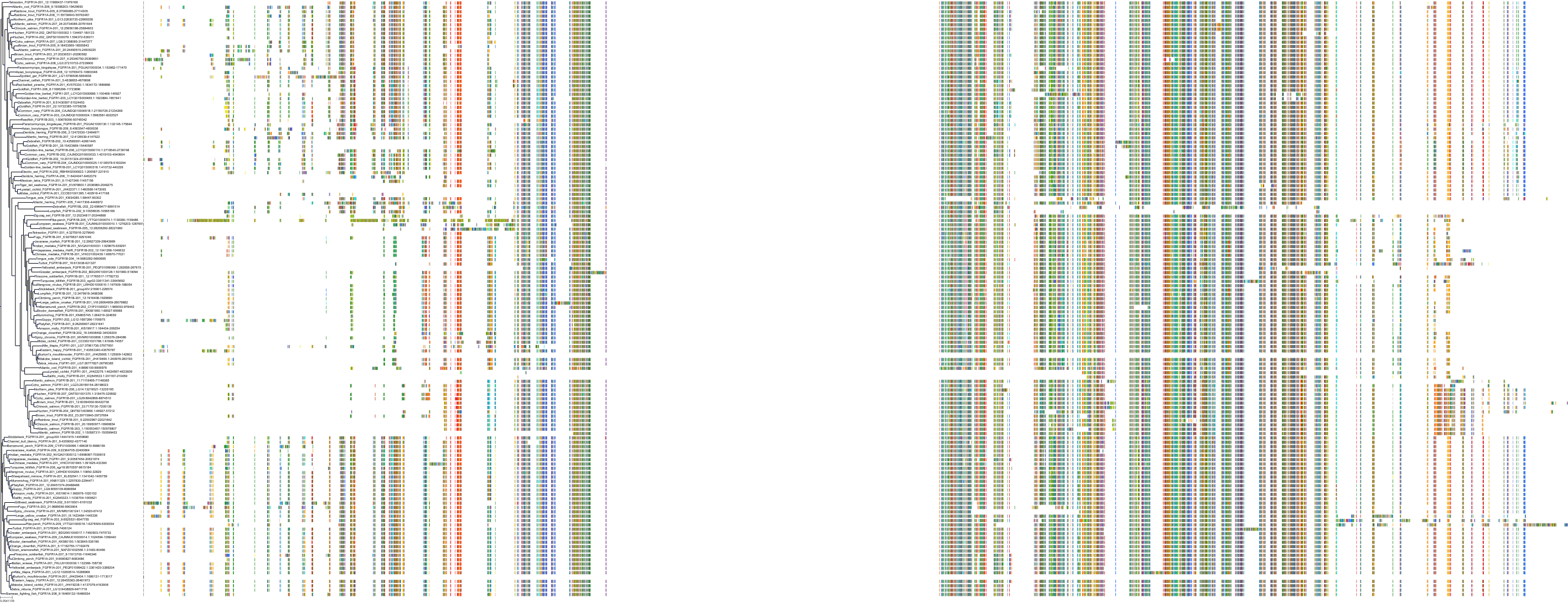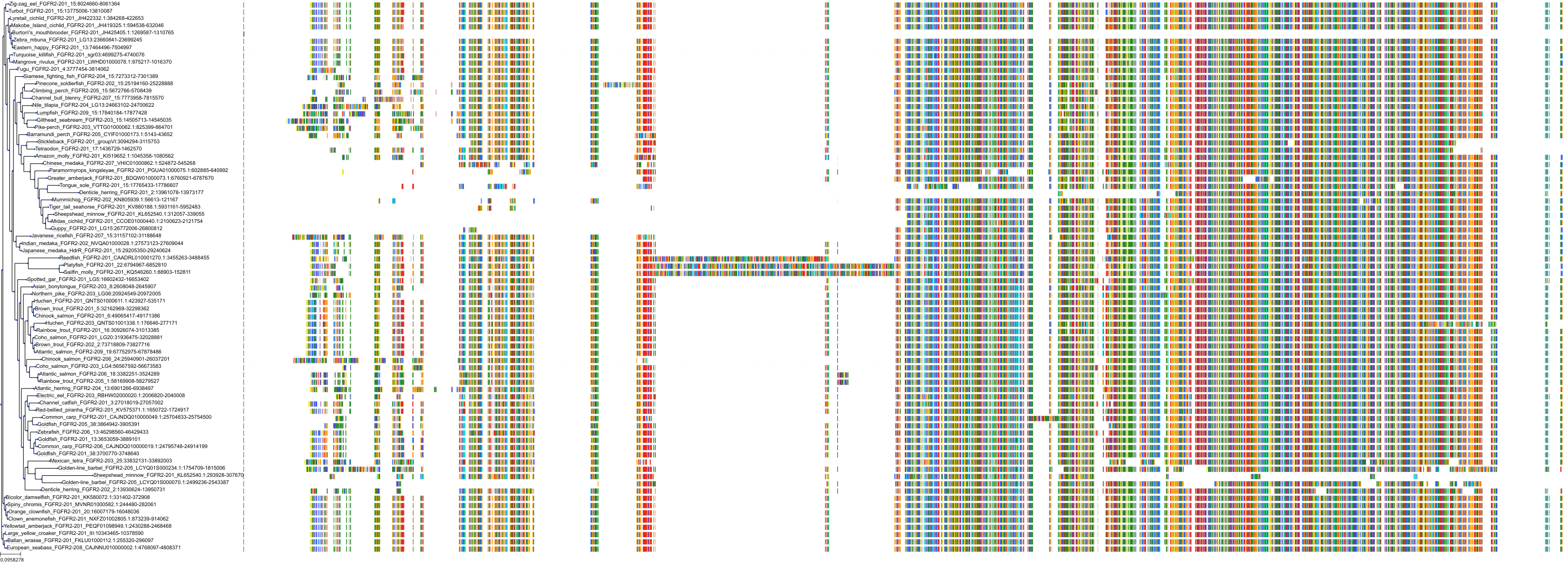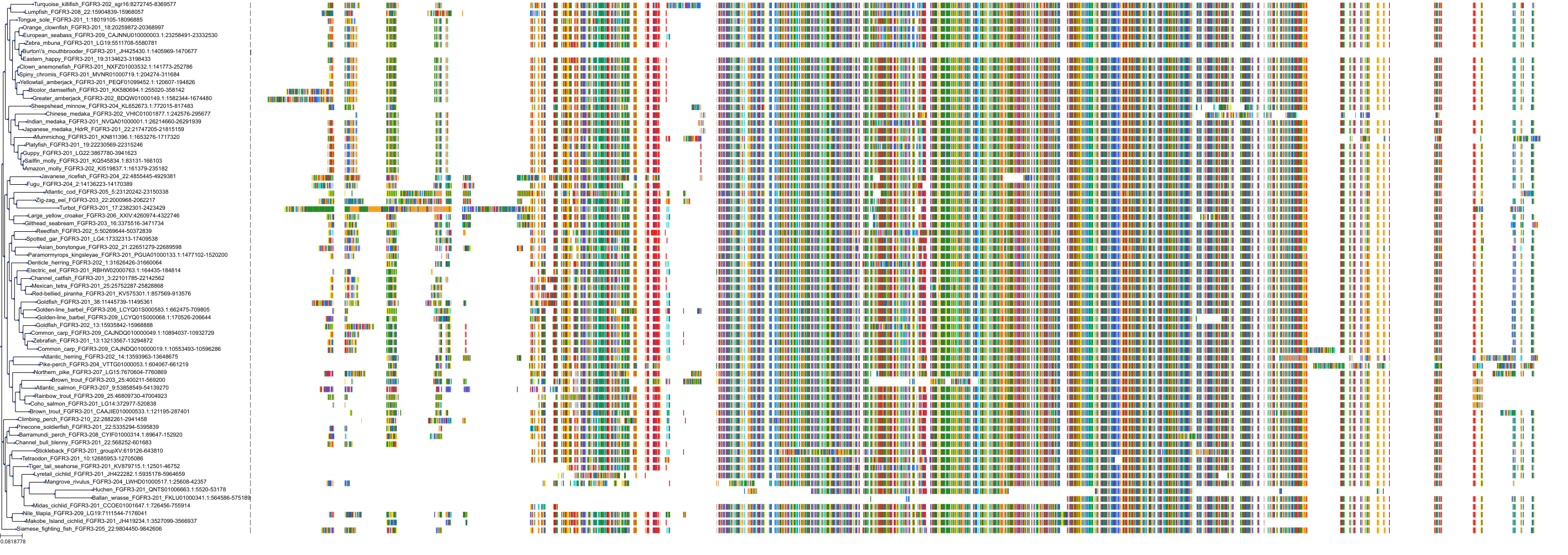|
High ATP Kinase Assay: For the assay, 50 nl of each stock solution of the test compound in DMSO was pipetted into a black, low-volume 384-well microtiter plate (Greiner Bio-One, Frickenhausen, Germany) 2 μl of a solution of the above FGFR-1 fusion protein in aqueous assay buffer [8 mM MOPS pH 7.0, 10 mM magnesium acetate, 1.0 mM dithiothreitol, 0.05% (w/v) bovine serum albumin (BSA), 0.07% (v/v) Tween-20, 0.2 mM EDTA] was added, and the mixture was incubated for 15 min at 22° C. to allow pre-binding of the test compound to the enzyme. Then, the kinase reaction was started by the addition of 3 ul of a solution of adenosine triphosphate (ATP, 3.3 mM; final concentration in the 5 ul assay volume=2 mM) and substrate (0.16 uM; final concentration in the 5 ul assay volume=0.1 uM) in assay buffer, and the resulting mixture was incubated for a reaction time of 15 min at 22° C. The concentration of FGFR-1 fusion protein was adjusted depending on the activity of the enzyme lot.
|
Homo sapiens
|
12.2
nM
|
|
High ATP Kinase Assay: For the assay, 50 nl of each stock solution of the test compound in DMSO was pipetted into a black, low-volume 384-well microtiter plate (Greiner Bio-One, Frickenhausen, Germany) 2 μl of a solution of the above FGFR-1 fusion protein in aqueous assay buffer [8 mM MOPS pH 7.0, 10 mM magnesium acetate, 1.0 mM dithiothreitol, 0.05% (w/v) bovine serum albumin (BSA), 0.07% (v/v) Tween-20, 0.2 mM EDTA] was added, and the mixture was incubated for 15 min at 22° C. to allow pre-binding of the test compound to the enzyme. Then, the kinase reaction was started by the addition of 3 ul of a solution of adenosine triphosphate (ATP, 3.3 mM; final concentration in the 5 ul assay volume=2 mM) and substrate (0.16 uM; final concentration in the 5 ul assay volume=0.1 uM) in assay buffer, and the resulting mixture was incubated for a reaction time of 15 min at 22° C. The concentration of FGFR-1 fusion protein was adjusted depending on the activity of the enzyme lot.
|
Homo sapiens
|
7.2
nM
|
|
|
Kinase Assay: For the assay, 50 nl of each stock solution of the test compound in DMSO was pipetted into a black, low-volume 384-well microtiter plate (Greiner Bio-One, Frickenhausen, Germany) 2 ul of a solution of the above FGFR-3 fusion protein in aqueous assay buffer [8 mM MOPS pH 7.0, 10 mM magnesium acetate, 1.0 mM dithiothreitol, 0.05% (w/v) bovine serum albumin (BSA), 0.07% (v/v) Tween-20, 0.2 mM EDTA] was added, and the mixture was incubated for 15 min at 22° C. to allow pre-binding of the test compound to the enzyme. Then, the kinase reaction was started by the addition of 3 ul of a solution of adenosine triphosphate (ATP, 16.7 uM; final concentration in the 5 ul assay volume=10 uM) and substrate (0.8 uM; final concentration in the 5 ul assay volume=0.5 uM) in assay buffer, and the resulting mixture was incubated for a reaction time of 60 min at 22° C. The concentration of FGFR-3 fusion protein was adjusted depending on the activity of the enzyme lot.
|
Homo sapiens
|
24.8
nM
|
|
Kinase Assay: For the assay, 50 nl of each stock solution of the test compound in DMSO was pipetted into a black, low-volume 384-well microtiter plate (Greiner Bio-One, Frickenhausen, Germany) 2 ul of a solution of the above FGFR-3 fusion protein in aqueous assay buffer [8 mM MOPS pH 7.0, 10 mM magnesium acetate, 1.0 mM dithiothreitol, 0.05% (w/v) bovine serum albumin (BSA), 0.07% (v/v) Tween-20, 0.2 mM EDTA] was added, and the mixture was incubated for 15 min at 22° C. to allow pre-binding of the test compound to the enzyme. Then, the kinase reaction was started by the addition of 3 ul of a solution of adenosine triphosphate (ATP, 16.7 uM; final concentration in the 5 ul assay volume=10 uM) and substrate (0.8 uM; final concentration in the 5 ul assay volume=0.5 uM) in assay buffer, and the resulting mixture was incubated for a reaction time of 60 min at 22° C. The concentration of FGFR-3 fusion protein was adjusted depending on the activity of the enzyme lot.
|
Homo sapiens
|
29.4
nM
|
|






































